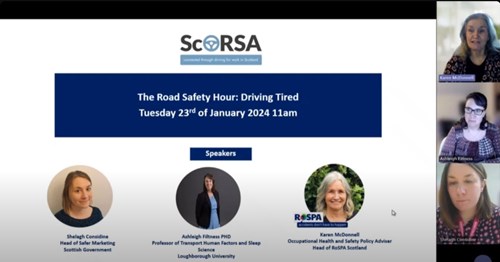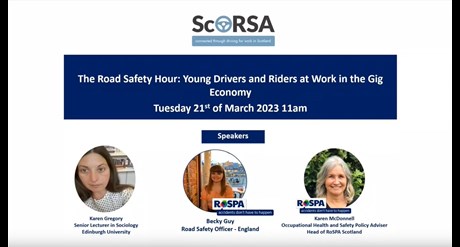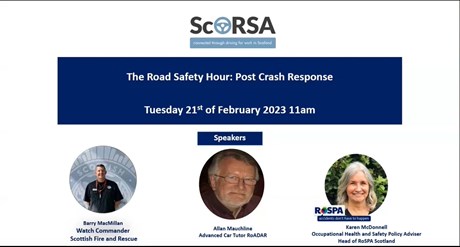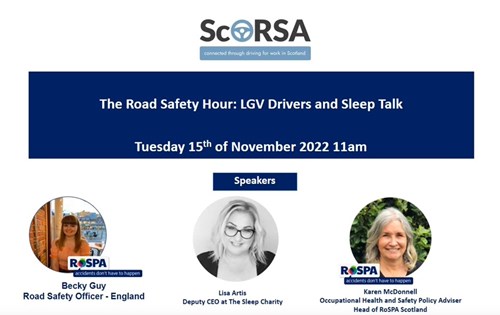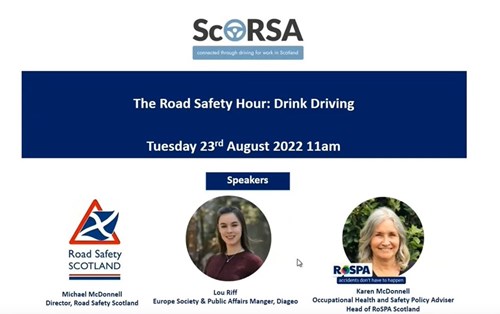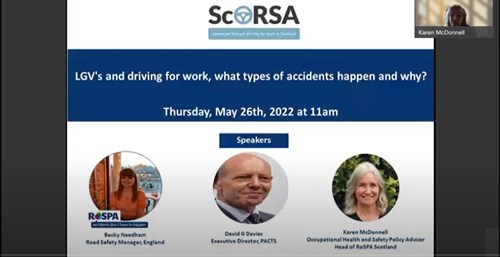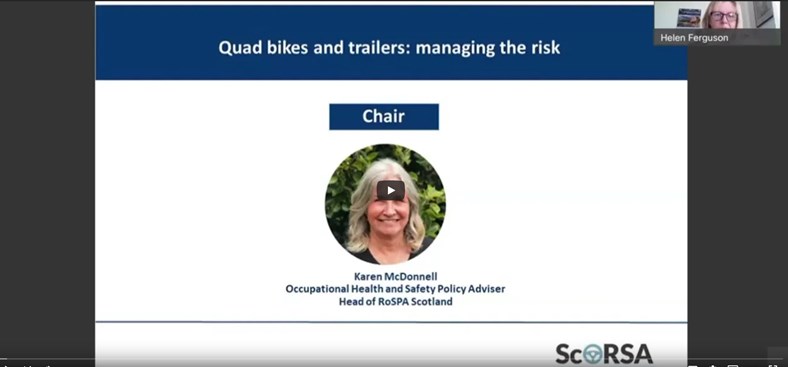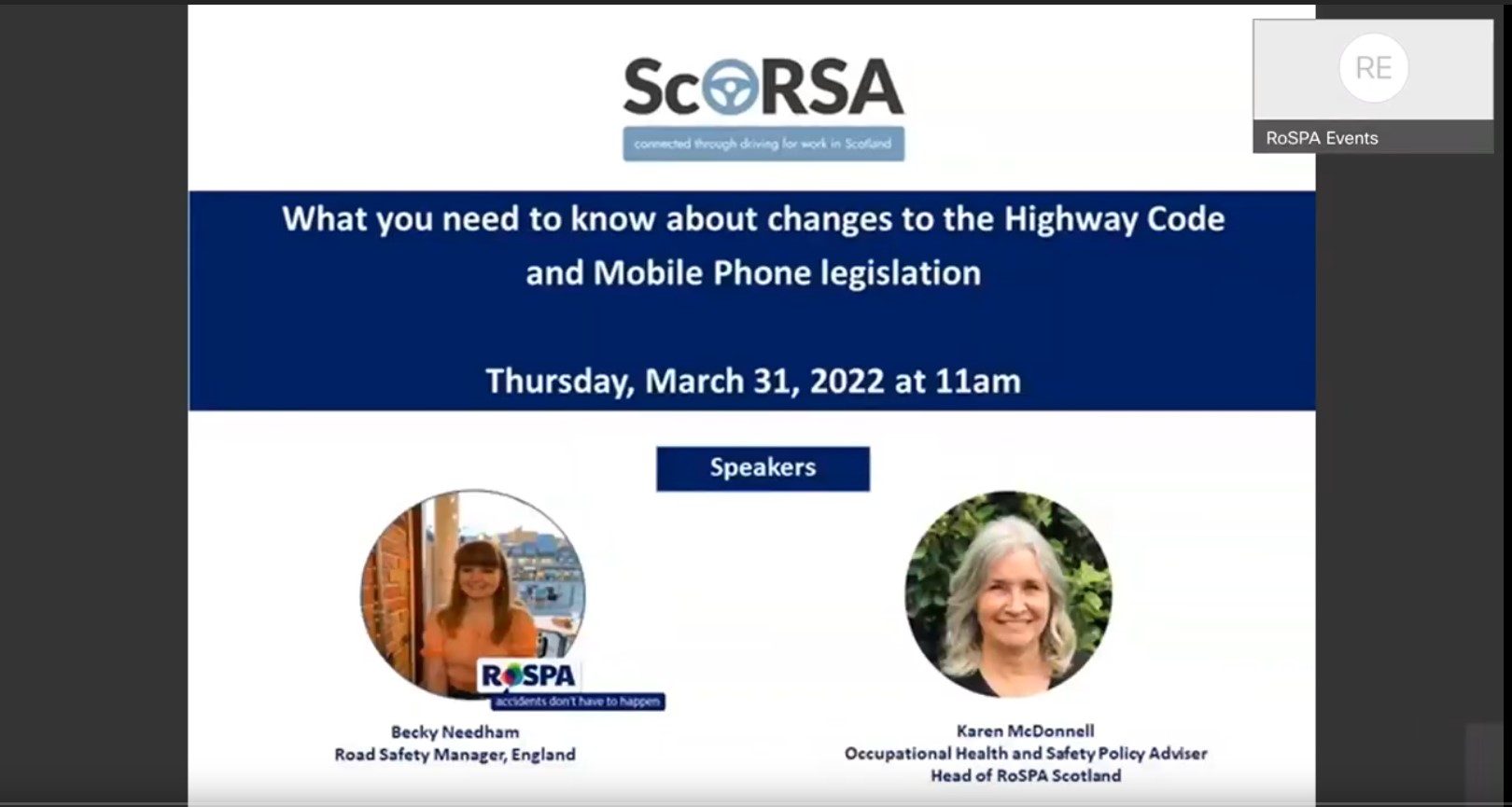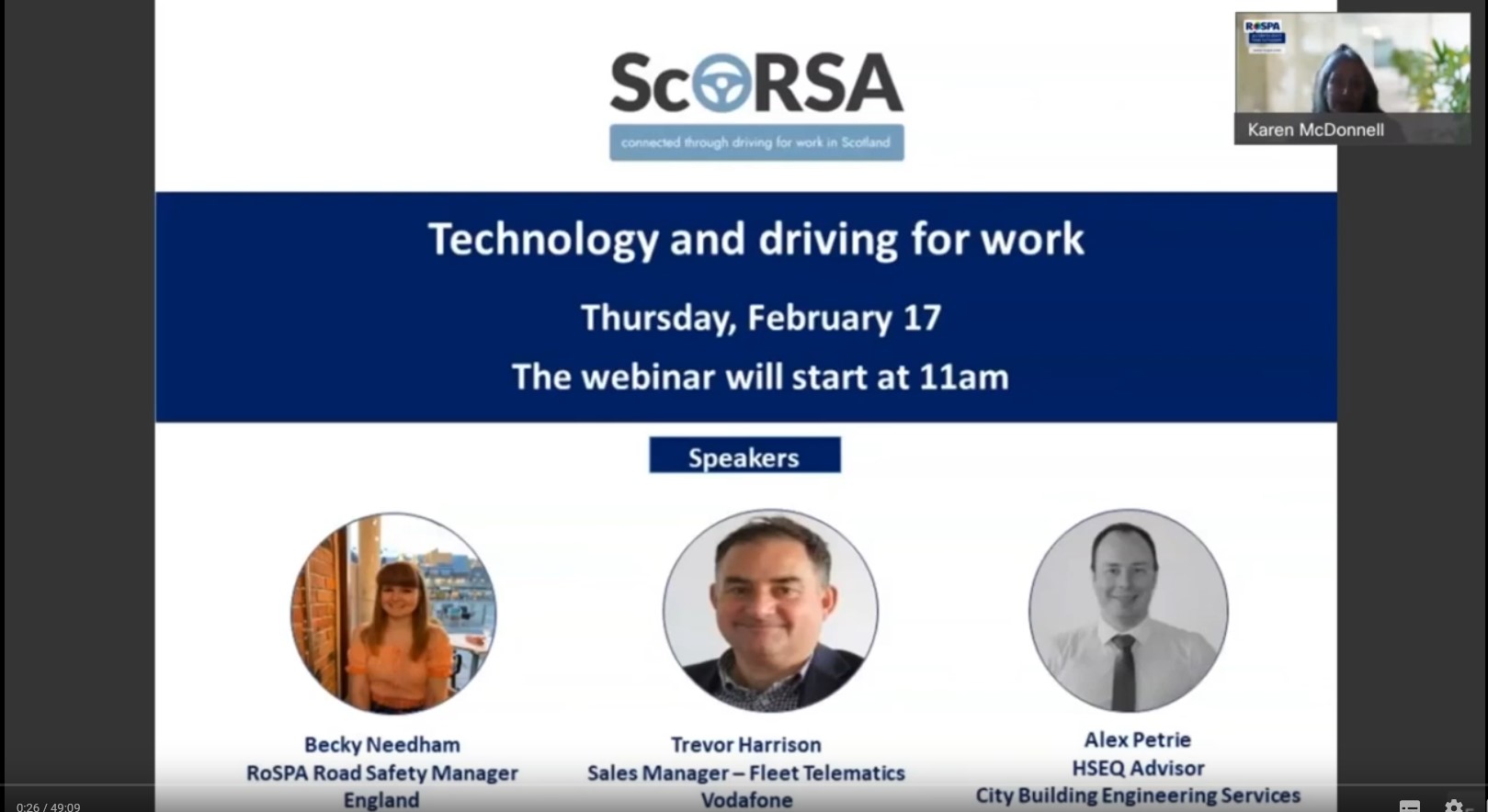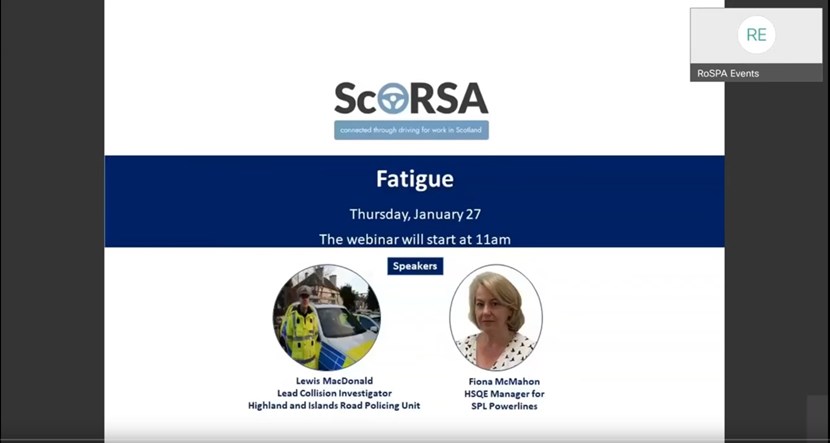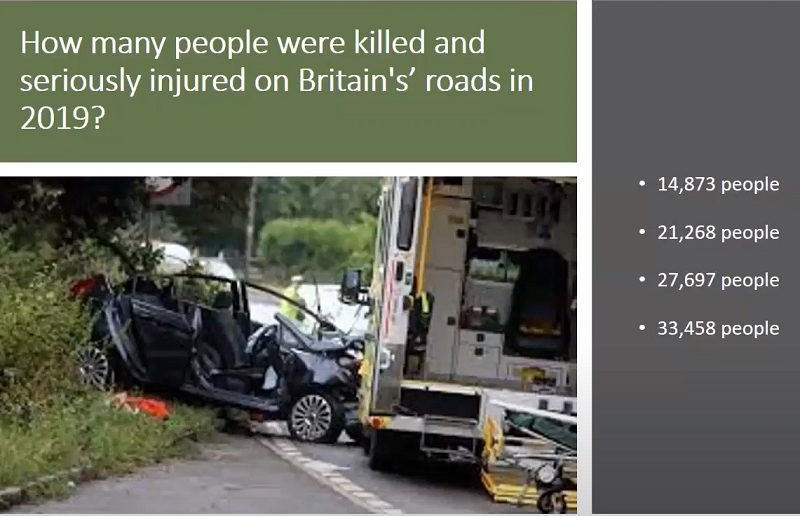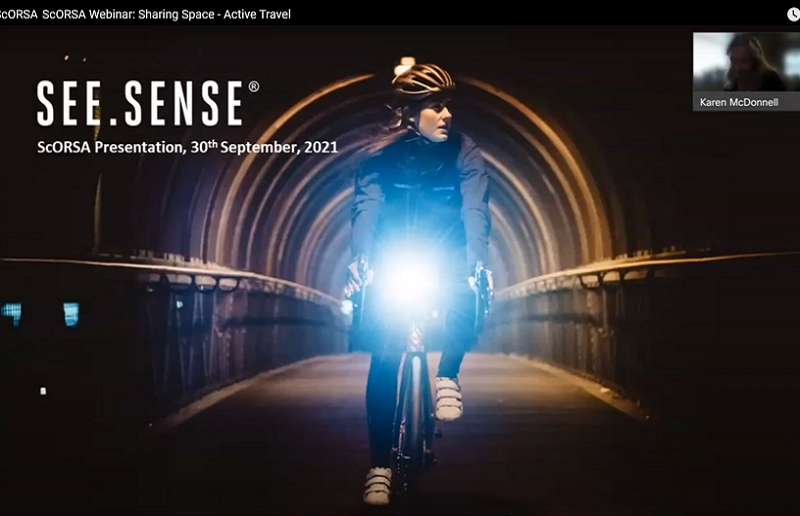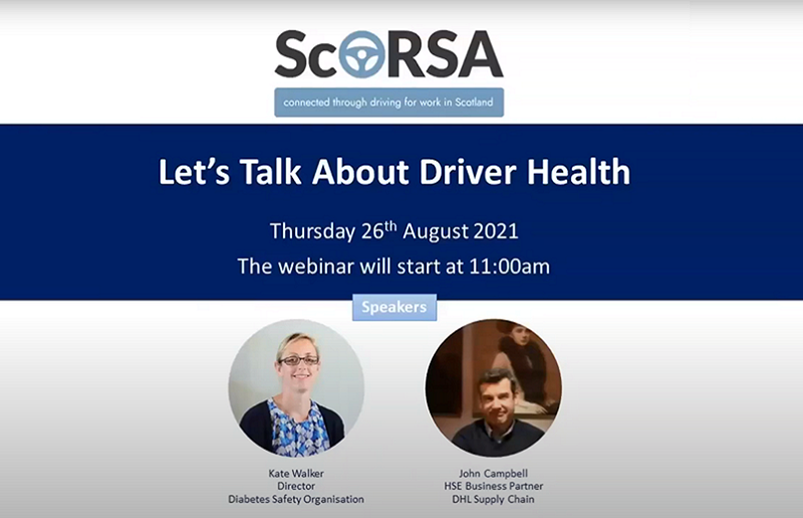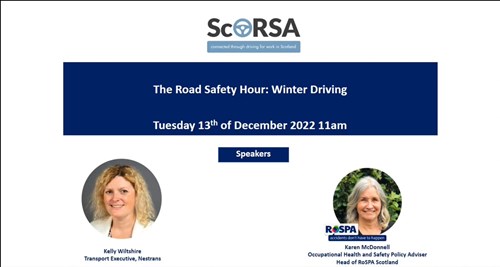Webinars
You can watch our latest webinars using the links below. To access our resources and to be kept up to date with our work, become a member today - its free!
The Road Safety Hour: Managing the Misuse of Drink and Drugs
Watch an essential webinar where we discuss our newly released a Best Practice Guide for Managing Drink and Drug Misuse in the Workplace and When Driving for Work, created in collaboration with Dräger. This authoritative guide provides practical strategies and evidence-based approaches to help organisations mitigate the serious safety, legal, and financial risks associated with alcohol, drugs, and certain prescription medications in the workplace.
This webinar is ideal for HR leaders, safety managers, line managers, and anyone responsible for employee wellbeing and organisational safety. Participants will gain tools, policy checklists, and expert guidance to reduce alcohol- and drug-related risks - both on-site and on the road.
The Road Safety Hour: Winter Driving and Tyre Safety
It’s a good idea to make sure all vehicles are serviced and checked before the onset of winter, especially the tyres, brakes, lights and fluid levels. Also consider what emergency equipment drivers should carry in case they become stranded, such as spare warm clothing, a torch, food and drink, a shovel and a mobile phone to call for help. Tyres are the only part of your vehicle in direct contact with the road, making them critical to your safety. Worn, under-inflated, or damaged tyres significantly increase the risk of accidents, especially in wet or high-speed conditions. Proper tyre maintenance isn't just about safety - it's about efficiency and cost-saving too. Well-maintained tyres can improve fuel economy and extend the lifespan of your vehicle.
The Road Safety Hour: Artificial Intelligence
Artificial Intelligence (AI) is playing an increasingly important role in road safety - especially for those who drive for work. Here at ScORSA, we’re exploring how AI-powered technologies can help organisations reduce risk, support safer driving behaviour, and protect those who drive as part of their job.</span >
The Road Safety Hour: Driver Fatigue
 Fatigue reduces alertness and slows reaction times, increasing the likelihood of crashes, especially among those who drive for work. This page explores the causes of driver fatigue, such as long hours and poor sleep, and outlines strategies employers can adopt to manage fatigue-related risks.
Fatigue reduces alertness and slows reaction times, increasing the likelihood of crashes, especially among those who drive for work. This page explores the causes of driver fatigue, such as long hours and poor sleep, and outlines strategies employers can adopt to manage fatigue-related risks.
The Road Safety Hour: Work Related Road Traffic Collisions.
 This session will reflect on the In-Depth Road Traffic Fatalities Report for the Years 2015-2020, co-authored by Police Scotland and Transport Scotland. The main contributory factors which influenced fatal collisions were people being careless, reckless or in a hurry, failing to look properly and losing control of their vehicle. Nonetheless, analysis identified that a combination of Road, Vehicle and People countermeasures (CMs) were required in order to mitigate the risk of the collision taking place, or reduce the severity of the collision.
This session will reflect on the In-Depth Road Traffic Fatalities Report for the Years 2015-2020, co-authored by Police Scotland and Transport Scotland. The main contributory factors which influenced fatal collisions were people being careless, reckless or in a hurry, failing to look properly and losing control of their vehicle. Nonetheless, analysis identified that a combination of Road, Vehicle and People countermeasures (CMs) were required in order to mitigate the risk of the collision taking place, or reduce the severity of the collision.
How can business mitigate these risks, and in the event of a fatal collision what investigation protocol is followed by the organisation, the Police and HSE?
The Road Safety Hour: Speed and it's Management.
 Speed is very regularly cited as one of the most common collision causation factors and is related to both collision occurrence and severity. Inappropriate or excessive speed is a major cause of death and injury on roads and there is also overwhelming evidence that the frequency of accidents rises disproportionately with speed.
Speed is very regularly cited as one of the most common collision causation factors and is related to both collision occurrence and severity. Inappropriate or excessive speed is a major cause of death and injury on roads and there is also overwhelming evidence that the frequency of accidents rises disproportionately with speed.
How can business contribute to a reduction in the number of people killed a seriously injured on our roads?
The Road Safety Hour: Best practice in vehicle loading and unloading.
 The Road Safety Hour: Best practice in vehicle loading and unloading, and why it’s important from an insurer’s perspective.
The Road Safety Hour: Best practice in vehicle loading and unloading, and why it’s important from an insurer’s perspective.
Loading and unloading vehicles is a day-to-day activity for many workers who drive for work, getting it right reduces the potential for accidents both within the loading area and out on Scotland’s roads.
From ensuring that loads are spread evenly during loading and unloading, to ensuring that they cannot move in transit and systems to protect people working at height. To ensuring maximum loading isn’t exceeded and checking loads have not moved in transit there is a ‘safe way’ of doing things.
The Road Safety Hour: Winter Driving and Weather Resilience.
In 2022, 14 people were killed, 379 were seriously injured and 1,227 were slightly injured in reported road collisions on Great Britain's roads when there was rain, snow, sleet or foggy conditions
Over recent years the challenges of storms and flooding have also added to the risks already faced by people driving and riding for work…so how do you prepare your business for the challenge…how vulnerable is your organisation to the effects of climate change?
The Road Safety Hour: Driving for Work Strategy, joining the dots.
The Road Safety Hour: Driving for Work Strategy, joining the dots Scotland’s Road Safety Framework to 2030 sets out a vision for Scotland to have the best road safety performance in the world by 2030 and an ambitious long-term goal where no one is seriously injured or killed on our roads by 2050.
Road Traffic Accidents are a leading preventable cause of death, serious injury and long-term
disability, which significantly impacts on individuals, families, communities and industry, and place a huge burden on our health and social care system, and on society as a whole.
Driving is the most dangerous work activity most people do. The Health and Safety Executive and Department for Transport estimate that more than a quarter of all road traffic incidents involve somebody who is driving as part of their work . Based on Department for Transport figures for Great Britain in 2019 , of 1,752 deaths in total, more than 438 (25%) were estimated to have died in a road accident involving
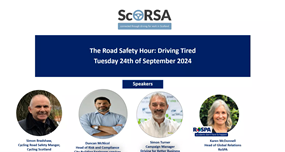
somebody driving as part of their work.
This data drives the ScORSA project, the strategic management of driving and riding for work related risks has many benefits, personal, organisational and societal.
The Road Safety Hour: Driving Tired.
Despite the significant impact drowsy driving has on the individual, the wider community and society both in terms of the direct (accidental injury or death) and indirect costs, driving whilst sleepy remains a significant public health concern. Within the ScORSA project we have shared information relating to sleepiness and fatigue in the context of driving, alongside policies, practices and safeguarding procedures, however data demonstrates that levels of drowsy driving appear to remain consistent.
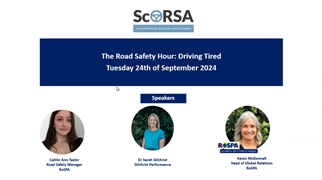
This Road Safety Hour will focus on current estimates regarding the scale of the issue, the proposed reasons for drowsy driving in this context, and latest innovations aimed to tackle this issue.
Where can business start closing the gap?
The Road Safety Hour: Workplace Transport Loading and Unloading.
Loading and unloading can be dangerous. Machinery can seriously hurt people. Heavy loads,
moving or overturning vehicles and working at height can all lead to injuries or death. How
should you manage the risk?
The Road Safety Hour: Drivers and riders in GIG economy.
Drivers and riders working for gig economy digital platforms have become an increasing
presence on our roads in the last 10 years. However, aspects of how these platforms operate can increase road safety risks for the people working in it and for all road users.
Having drivers/riders on the road who are tired from working long hours or time-pressured due to the way work is scheduled increases the chance of unsafe driving/riding behaviours and collisions.
What does business need to understand and do differently?
The Road Safety Hour: Work Related Road Traffic Collisions
This session will reflect on the In-Depth Road Traffic Fatalities Report for the Years 2015-2020, co-authored by Police Scotland and Transport Scotland. The main contributory factors which influenced fatal collisions were people being careless, reckless or in a hurry, failing to look properly and losing control of their vehicle. Nonetheless, analysis identified that a combination of Road, Vehicle and People countermeasures (CMs) were required in order to mitigate the risk of the collision taking place, or reduce the severity of the collision.
How can business mitigate these risks, and in the event of a fatal collision what investigation protocol is followed by the organisation, the Police and HSE?
Watch the webinarThe Road Safety Hour: Driving for work strategy, hints and tips.
Pause reflect and re-set around driving and riding for work
Sharing what works, and the barriers that organisations have overcome when developing and implementing driving and riding for work strategies is at the heart of the ScORSA community.
Join us to hear from ScORSA members who have tackled the issues systematically, managed the risks and added value to their organisations. From ‘quick fixes’ with long term benefits, periods of consolidation or agreeing next steps, their insights are relevant to all and can be scaled to fit no matter how large or small the organisation
The Road Safety Hour: Driving Tired
Driving tired kills, what are the challenges in the transportation industry and how can they be overcome? How has being a workplace sleep ambassador helped understand fatigue and manage the risk.
The Road Safety Hour: Winter Driving
Driving in the winter is very different than at other times of the year. Adverse weather and longer periods of darkness (especially after the clocks go back at the end of October) make driving more hazardous. Sometimes conditions can be extreme, as we have found out over recent winters, with prolonged periods of heavy snow and floods. Where does your organisation get it’s weather related information from?
Different weather conditions create different hazards throughout the winter and in different areas of the country at different times. A single journey may take us into very different weather, road and traffic conditions, where do journey planning and risk assessment help you manage the risk?
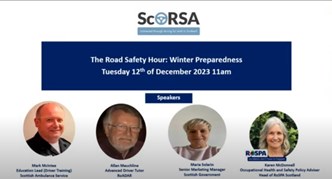
The Road Safety Hour: Shared Spaces
Scotland’s roads are a shared space. Everyone driving and riding for work is sharing the road with people on bicycles and people on horseback. Cycling Scotland and the British Horse Society will help ScORSA members understand the Highway Code and what drivers and riders should be doing differently to keep cyclists and riders safe on Scotland’s roads.
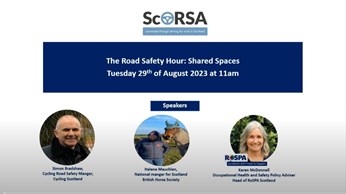
The Road Safety Hour: Young Drivers and Riders at Work and the Gig Economy:
Young drivers aged 17-24 make up just over 5 per cent of UK full driving licence holders yet are involved in over 20 per cent of fatal or serious collisions in which they are the driver. How should organisations manage the risk to their young drivers? Riding in the gig economy
Roads are a shared space, people riding for work in the gig economy are part of the road safety conversation. What challenges do riders in the gig economy face and what can your organisation do differently to reduce the risk?
The Road Safety Hour: LGV drives and
Sleep Talk
LGV’s and Work
Light Goods Vehicles (LGVs) are defined as vans and trucks with a payload of less than 3.5 tonnes , and are responsible for a large proportion of all vehicle mileage, particularly in urban areas. What are the risks associated with LGV’s in your vehicle fleet and how should they be managed?
Talking about Sleep
Driving tired kills, research suggests that sleep-related vehicle accidents are likely to account for 16-20% of all vehicle accidents in the UK. How do you manage the risk? And what conversations do you have with drivers about sleep?
The Road Safety Hour: Post Crash Response
Post-crash response is the 5th pillar of the safe system that underpins Scotland’s road safety framework to 2030. Join us to hear from Barry MacMilan of the Scottish Fire and Rescue Service, the fourth largest fire and rescue service in the world will provide insights into their role and how they work with other emergency services to ensure victims are effectively cared for and investigations undertaken that reduce the potential for crashes in the future, and Allan Mauchline of RoADAR to explain the importance of driver training.
The Road Safety Hour by ScORSA: 20% Reduction in Car k/m and Vulnerable
Road Users
Scotland’s roads are a shared space, people driving and riding for work share this space with vulnerable road users, pedestrians, horse riders and cyclists. How can your drivers make a difference in the number of cyclists killed and seriously injured on Scotland’s roads. Andrew Abbess from Stirling Cycle Training will help you understand the issues from the perspective of a vulnerable road user and signpost you to information and advice to help you contribute to Scotland's Road Safety Framework to 2030. Making the link between active travel and health improvement makes sense, Bertrand Deiss will explain how your organisation can benefit from reducing the number of km driven on Scotland's roads. The link between smooth driving and fuel efficiency is well understood, but can you rethink how you deliver service and contribute towards the 20% reduction in car km.
The Road Safety Hour by ScORSA:
Drink Driving
Changing people’s attitudes towards drink driving saves lives. Every year 1.2 million lives worldwide are lost because of drink driving. But together we have the power to change this. Every accident caused when someone is under the influence of alcohol is 100% preventable. During this Road Safety Hour we will be taking a look at the most up to date stats and data in relation to drink driving in Scotland, as well as giving our members the chance to take part in a new e-learning module. Finally at the end of the hour as always there will be time for a Q&A. We’ve partnered up with Diageo and the United Nations institute for training and research, to share a new e-learning module, Wrong Side of the Road, which is aimed at teaching people, drivers and non-drivers alike, the dangers of drink driving through a series of online ‘conversations’ with real people who have been convicted of driving whilst under the influence of alcohol.
ScORSA Webinar: LGV's and Driving for work. What type of accidents happen and why?
Scotland’s roads are a shared space, has Scotland’s road safety performance improved over the last year? Where are the accidents happening, who is involved and how can businesses help improve road safety? There are more LGVs on our roads, particularly vans and delivery vehicles as a response to the increased demand for home delivery during the pandemic. Whist their size enables them to move around urban spaces, they also create a challenge for road safety as vans and their drivers are not subject to the same controls as ‘professional’ drivers, such as HGV or bus and coach drivers (Ward et al., 2020). They do not have to be trained to the same standards (most LGV drivers can drive on a standard driving licence) and are not subject to the same requirements on driving hours or roadworthiness testing. However, they are responsible for a large proportion of all vehicle mileage, particularly in urban areas. How are changes in LGV use and ownership might affecting road safety? What impact has the growth in the home delivery market had on commercial drivers? Increased number of drops, longer hours, more shifts all point towards fatigue, what can drivers across the UK tell us about the impact of sleep on driving for work?
ScORSA Webinar: Quads and Trailers - Managing the Risks
Quad bikes are widely used in agriculture, forestry, the land-based industries and by utility companies to access sites. People are killed and seriously injured being thrown off during vehicle overturns or after loss of control. By colliding with structures, trees, other vehicles or by being trapped/asphyxiated under an overturned machine. Pedestrians are also killed or seriously injured through being struck by or run over by ATVs. Trailers are used with quad bikes, on farms, in construction and many other sectors, what checks do you undertake to ensure they are maintained. Checks that are legally required under Provision and Use of Work Equipment Regulations. Are you really managing the risks?
ScORSA Webinar: What you need to know about changes to the Highway Code and Mobile Phone legislation
In 2020, 17 people were killed, 114 people were seriously injured, and 385 were slightly injured in road traffic accidents in Great Britain where the driver was using a mobile phone. UK legislation related to mobile phones and driving will change on March 25, 2022, and it will be stricter.
ScORSA Webinar: Technology and
Driving for Work
As part of an overall driving risk management programme, telematics can help you to risk assess drivers and journeys, monitor and analyse the real driving behaviour of your staff and provide tailored, personalised feedback to help improve their driving. It can also identify driver training and the educational needs of each driver and other ways of reducing their risk, eg. changing journey schedules, as well as incentivise improved driving and reduce crash rates and risky driving. Telematics can improve accident investigations, reduce costs with savings paying for the investment in the technology.
ScORSA Webinar: Focus on Fatigue
Driving tired kills on Scotland’s roads, fatigue is a contributory factor in around 50 fatal and serious injuries every year in Scotland. In 2019, fatigue was identified as a contributory factor in 2% of collisions, but in 5% of all road deaths. How is your organisation managing fatigue and driving? Do you assess the risk? How does Police Scotland undertake a collision investigation and find out fatigue has been involved?
ScORSA Webinar: Understanding the Fatal Four - A Focus on Speed and Drink &
Drug Driving
How does your organisation ensure that your drivers adhere to drink & drug policies and stay within the speed limits? How do you manage the issues, do you #KnowYourLimits? Just a couple of miles per hour over the limit can have devastating consequences. Any collision has an impact on workers, their families, victims families, emergency services and the people who witness it.
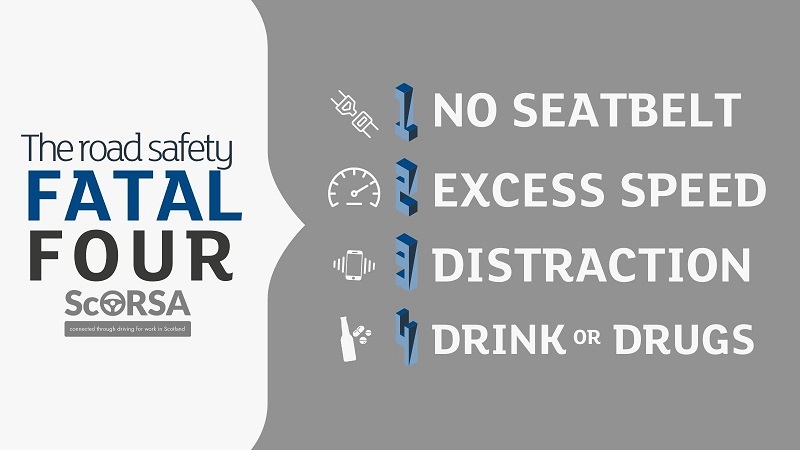
ScORSA Webinar: Briefing on updated HSE driving for work guidance.
Nicola Jaynes, HM Inspector of Health and Safety, provides a briefing on updated Health and Safety Executive guidance around driving for work which includes advice about managing gig economy couriers and fleet.
ScORSA Webinar: Sharing Space and
Active Travel
Key and essential workers have continued to drive throughout the pandemic. For others, the return to work has brought a range of considerations; re-familiarisation with work vehicles, new ways of travelling to work or indeed for work, walking, cycling or powered 2 wheelers.
In this webinar, Road safety experts from RoSPA and See.Sense inform ScORSA members about what they need to understand about ‘sharing space’ with vulnerable road users.
ScORSA Webinar: Let's talk about Driver Health
Safe place, safe vehicle and safe driver' are familiar words for ScORSA members.
Journey planning and vehicle checks are central to daily activity, but where does driver health fit in your approach to managing road risk?
Driver health is a critical component of driver safety - but what do we mean by ‘fitness to drive’?
The Road Safety Hour: Winter Driving
Winter driving poses unique challenges to drivers across Scotland and the wider world. Being prepared saves lives. Our speakers during the Road Safety Hour will be discussing risk assessment-based journey planning, and we will be joined by Women in Transports, Kelly Wiltshire to discuss the ‘Be Bright at Night’ campaign currently being run by the Road Safety North East Scotland Partnership. The campaign encourages those out walking, cycling, or exercising to wear something bright/ reflective and those driving to be vigilant, prepare their vehicle and adapt their driving. The reduction in visibility and change in road conditions coupled with more people walking and cycling for work or visiting city centres for festive activities, means that the number of pedestrian casualties are higher during this period, increasing in November and staying higher over December and into January.




